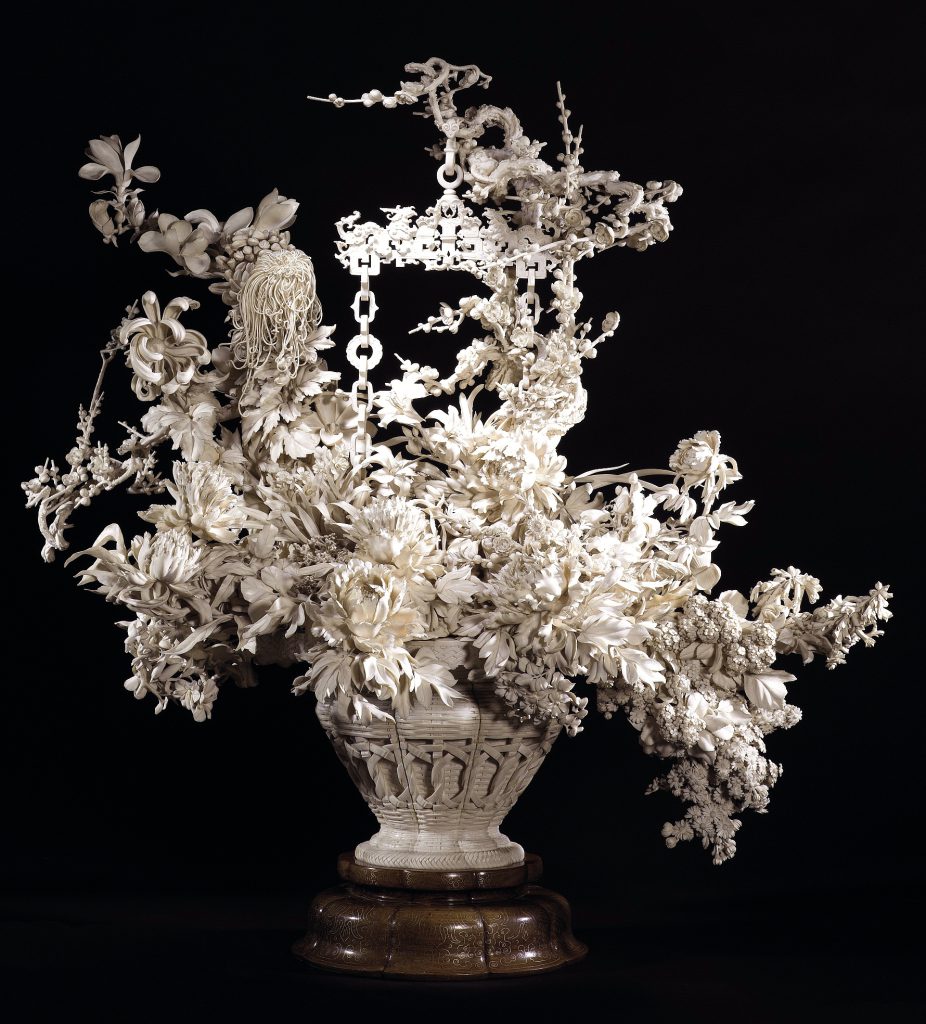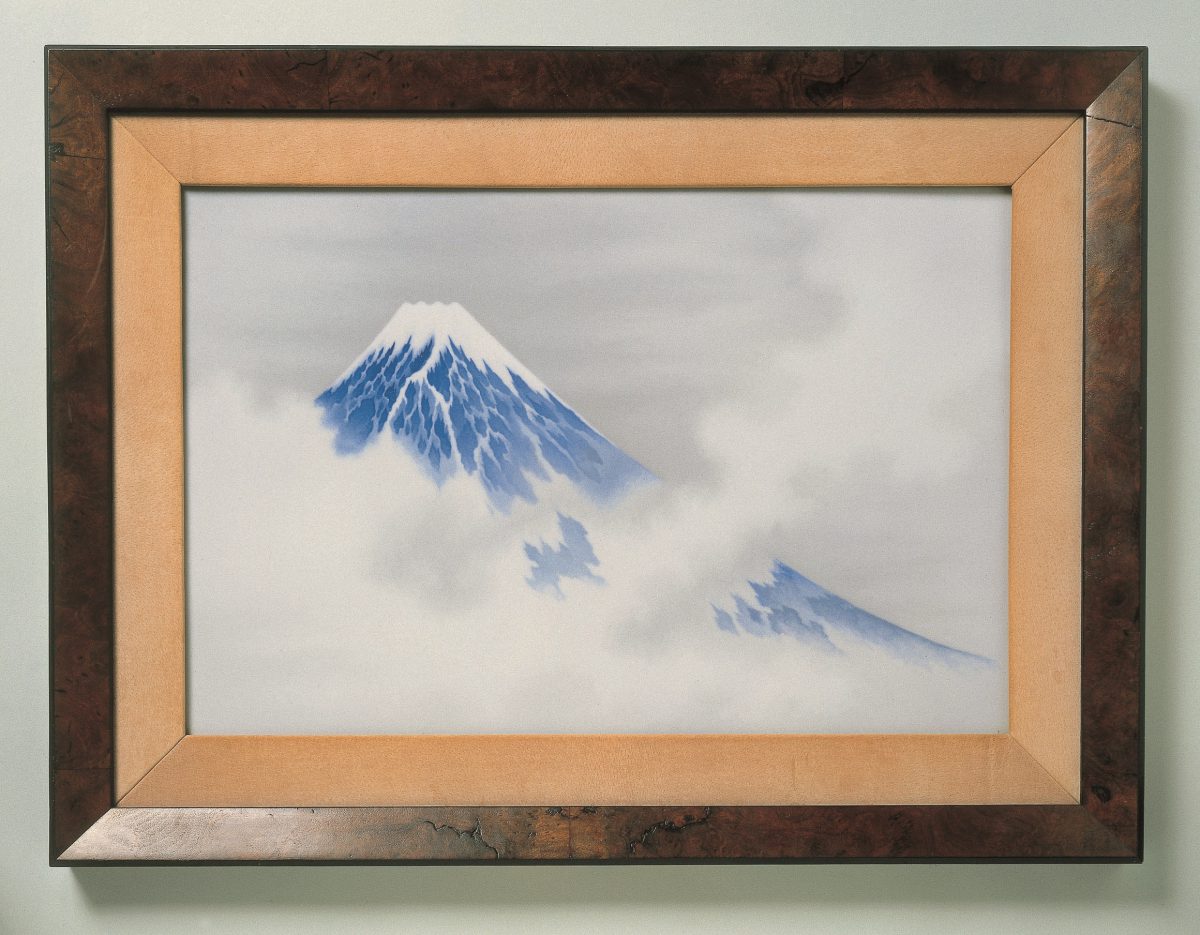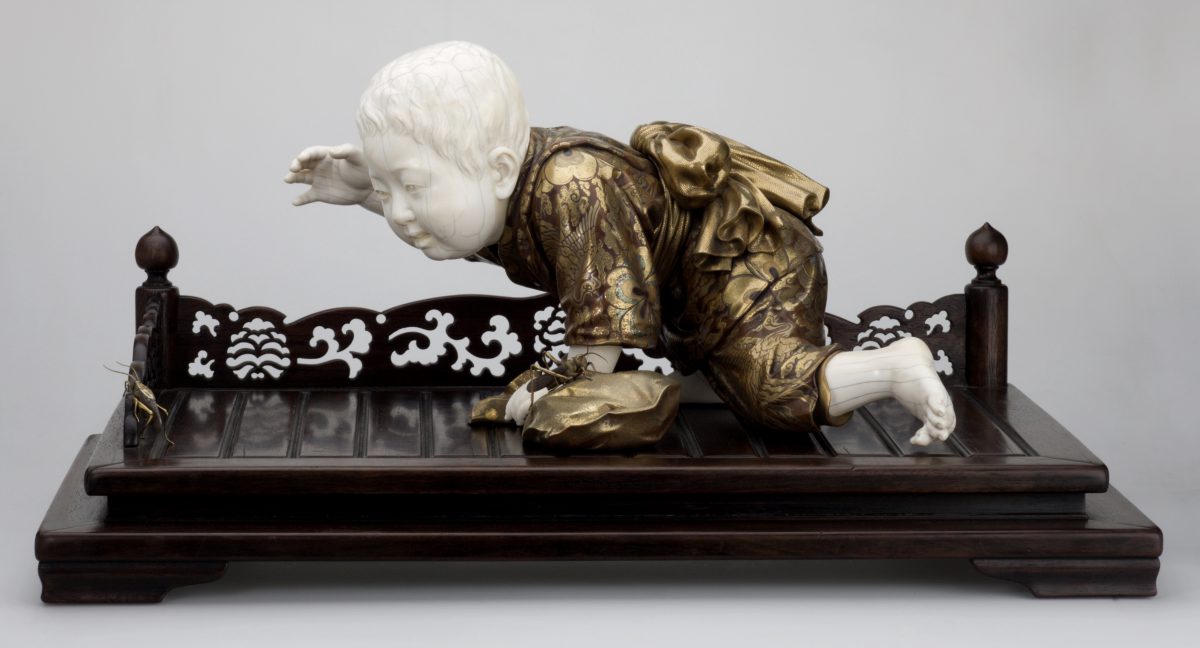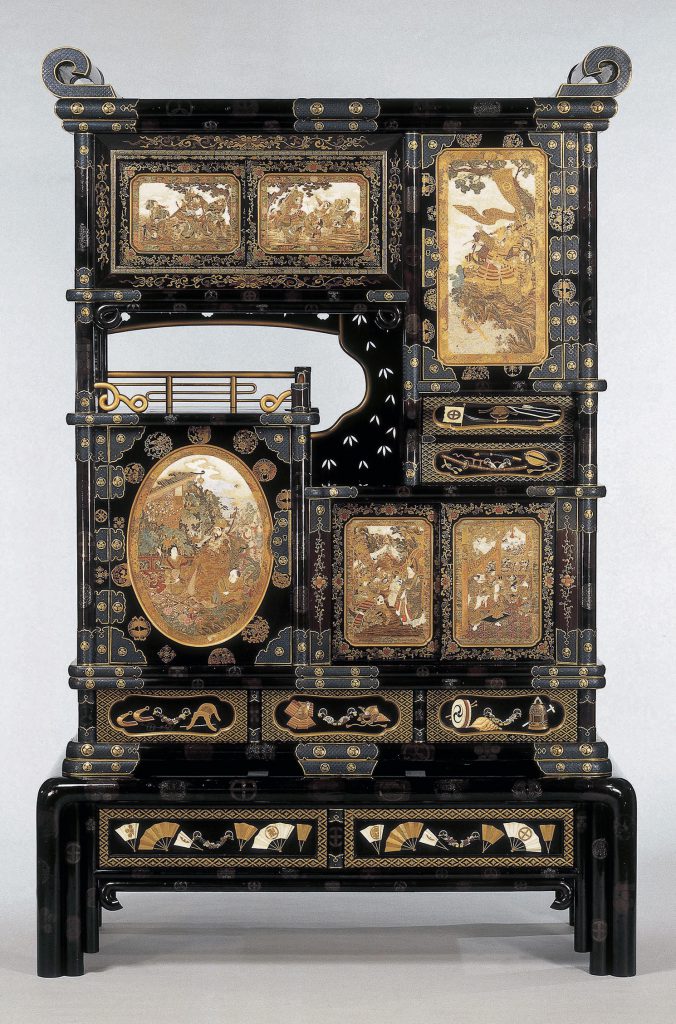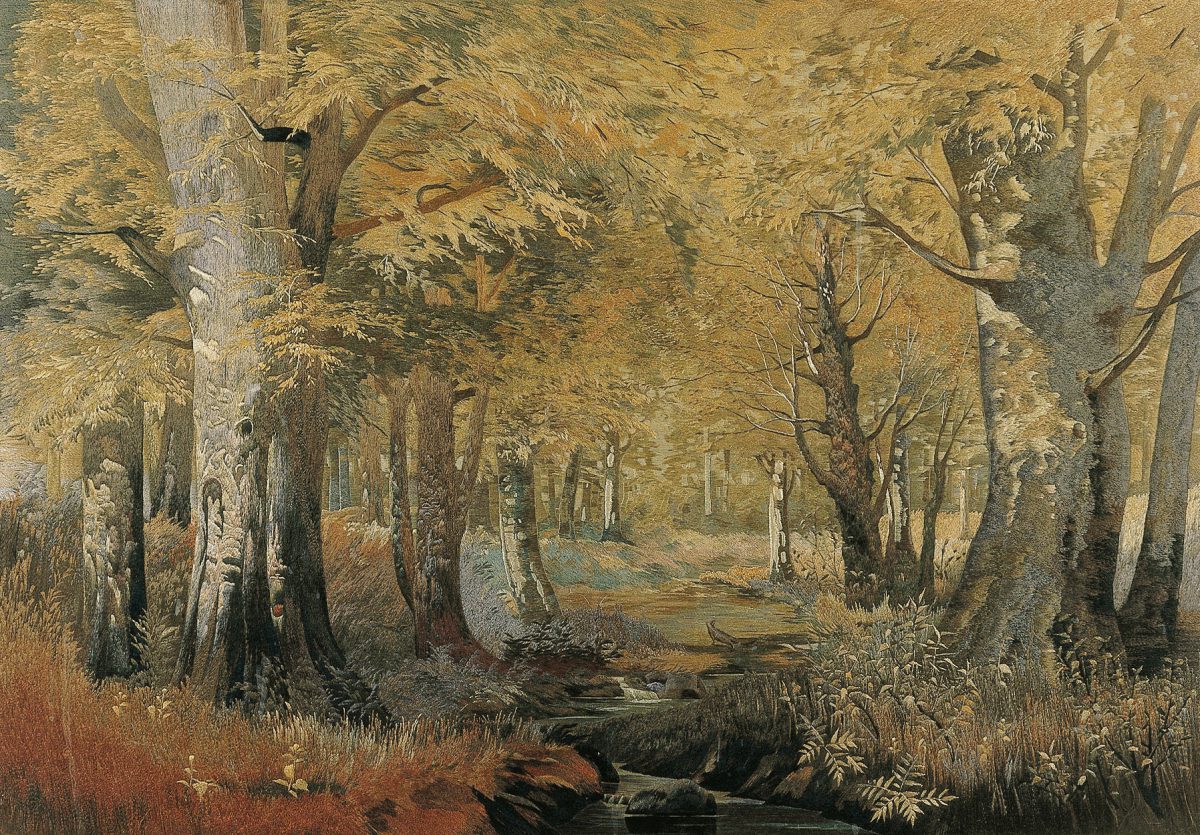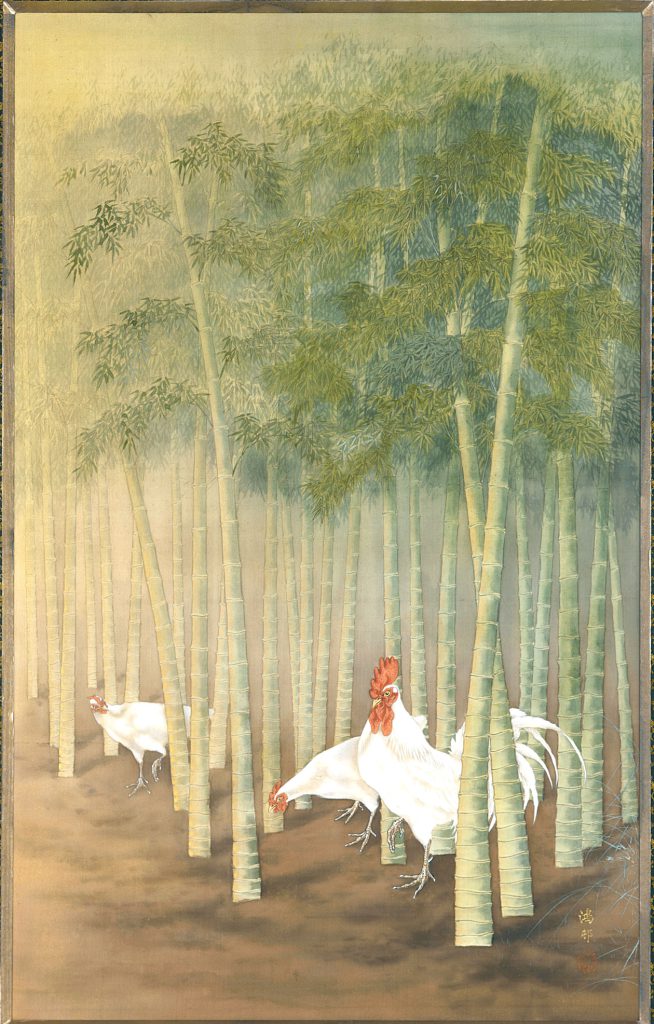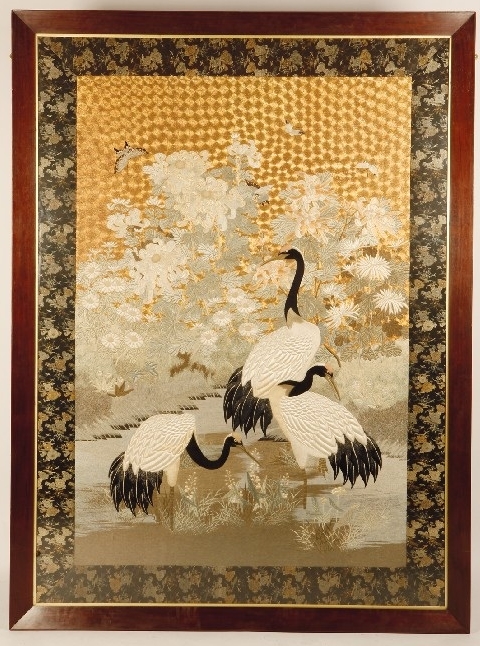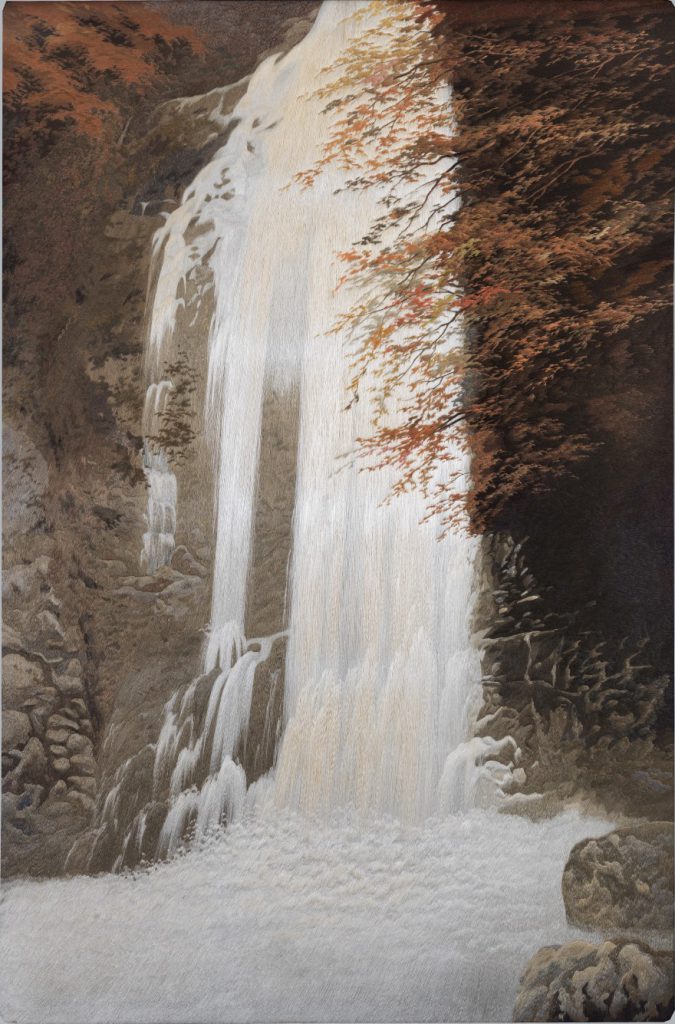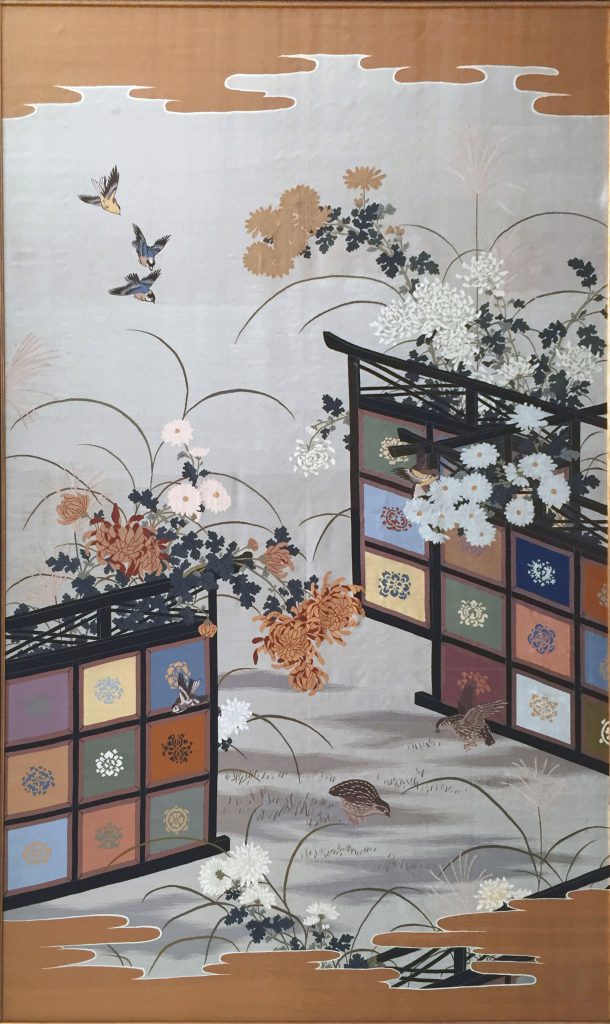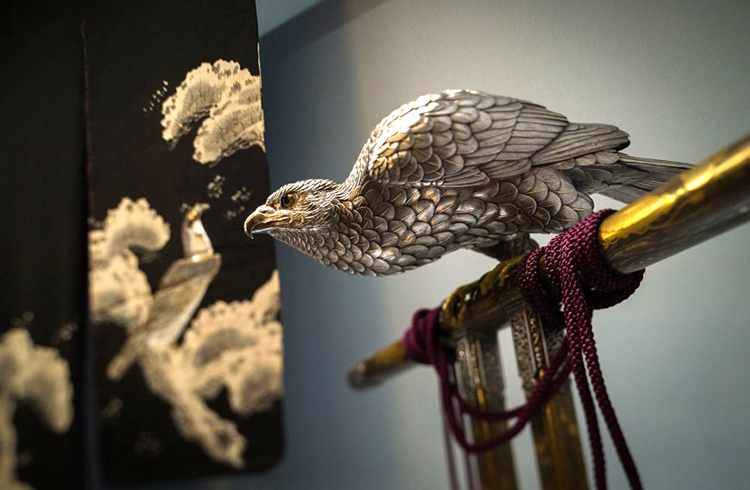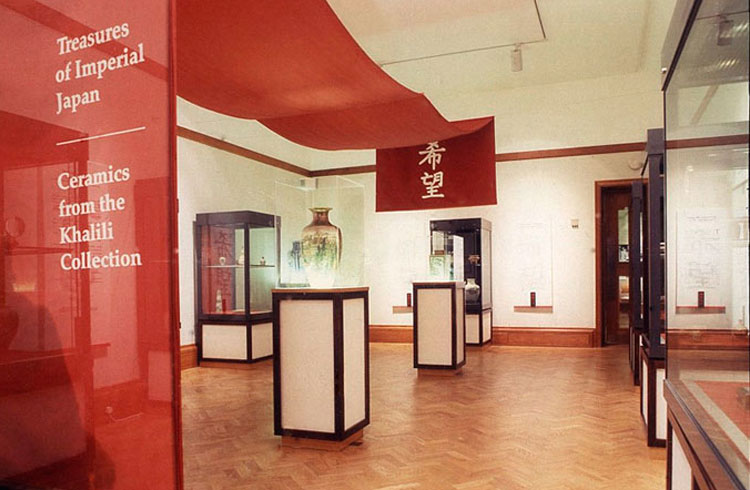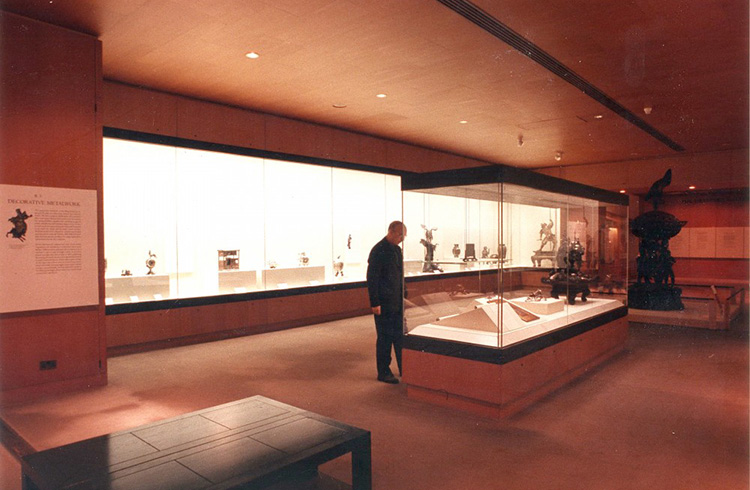-

Ivory Sculpture (Basket of Flowers)
109 x 115 x 50 cm
circa 1900 Japan
-

Panel
36 x 53.5 cm (excluding frame)
1900-1910 Japan, Nagoya
-

Figure of a Boy Catching Grasshoppers (Okimono)
height 39 cm overall, height of boy 30 cm, width 83 cm, depth 54.5 cm
circa 1890 Japan
-

Incense Burner (Koro)
height 37.1 cm
circa 1890 Japan
-

Cabinet
208 x 120 x 46 cm
1880s Japan
-

Panel
62 x 88 cm
about 1910 Japan
-

Painted silk Panel
3 x 84 x 114cm
Circa 1900 Japan
-

Panel
218.5 x 162.5 cm
Circa 1880 Japan
-

Embroidered silk panel
76 x 51.5
Circa 1900 Japan
-

Kesi weave wall hanging
211 x 136 cm
Late 19th - Early 20th century Japan
Japanese Art of the Meiji Period (1868 – 1912)
The Khalili Collection of Japanese Art, the world’s most comprehensive collection of Meiji decorative art, comprises over 1,600 pieces including works by most of the known masters from the middle of the 19th century to the early 20th century. Comparable in its extent only to that held by the Japanese Imperial family, the Collection houses many objects created by artists who had received the outstanding honour of becoming Artists to the Imperial Household and these masters, together with other sublime artists represented in the Collection, frequently won gold medals as participants in the great world expositions of that time. In many ways, it is no exaggeration to say that many of the intricate and technically accomplished objects in the Collection would be impossible to replicate today. Furthermore, echoes of the ground-breaking art produced in the Meiji period can be witnessed since the birth of the Avant-garde in Europe to this day. From the heavy influence on the Impressionists during the hayday of ‘Japonisme’ right up to the most cutting-edge digital art of the 21st century, the influence of Meiji art on the contemporary world is unparalleled.

